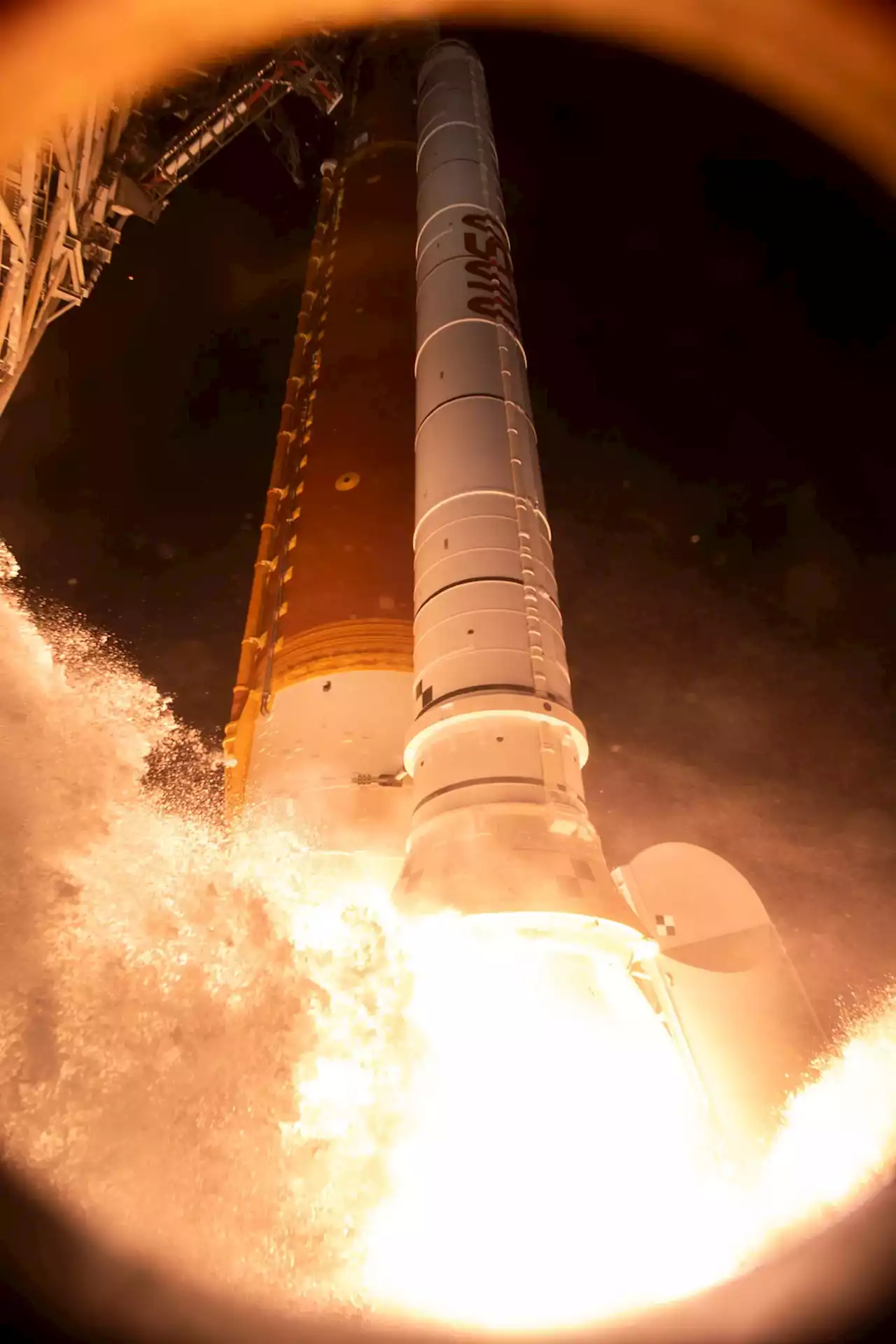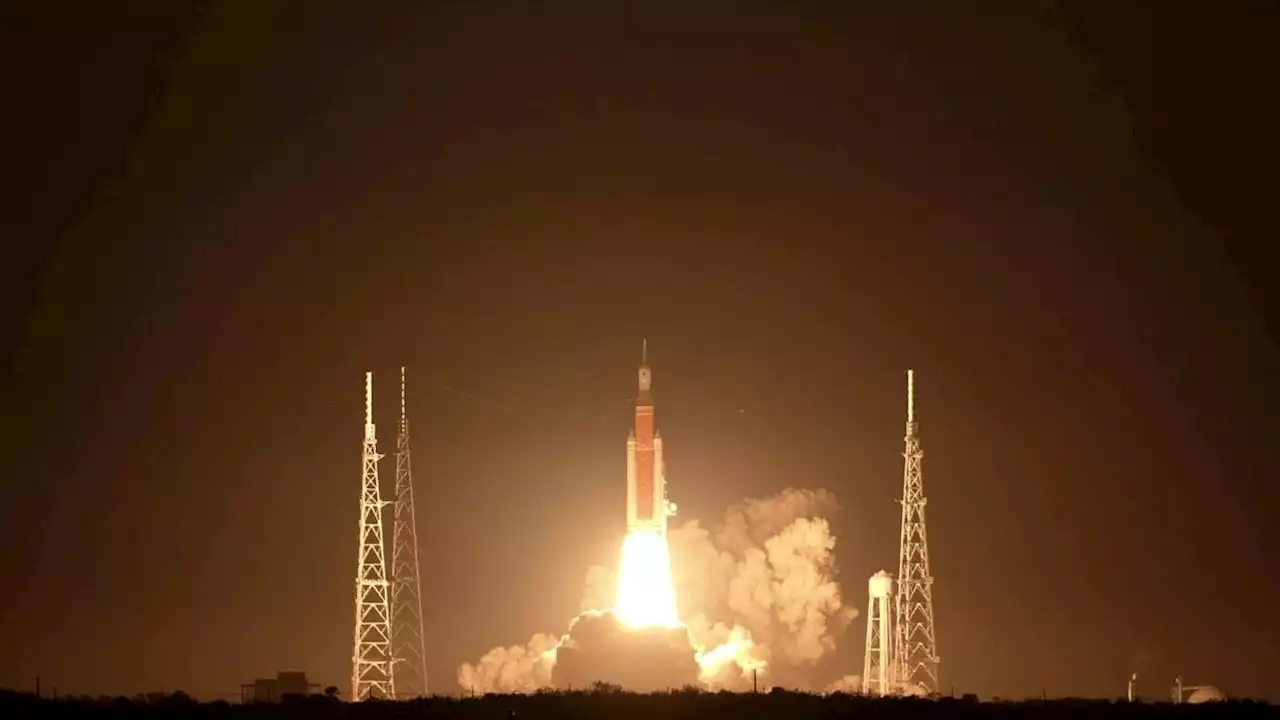NASA has turned to AI to help them develop, and build, more robust, lightweight components for its spacecraft of the future.
in Maryland has been using commercially available AI software to design specialized, bespoke parts, called "evolved structures," for its missions. They also look a little "out of this world."
“The algorithms do need a human eye,” McClelland said. “Human intuition knows what looks right, but left to itself, the algorithm can sometimes make structures too thin," he added. “We found it lowers risk. After these stress analyses, we find [that] the parts generated by the algorithm don’t have the stress concentrations you have with human designs. The stress factors are almost ten times lower than parts produced by an expert human,” McClelland explained.
“We have a couple of areas with very tricky design requirements,” Goddard physicist Peter Nagler said. “There were combinations of specific interfaces and exacting load specifications proving to be a challenge for our designers,” he added.
United States Latest News, United States Headlines
Similar News:You can also read news stories similar to this one that we have collected from other news sources.
 Ex-NASA Space Shuttle astronaut has a plan to get humans to Mars fast'For me, this is the one thing that needs to be done for humans to go to Mars,' Franklin Chang-Díaz told Interesting Engineering in an interview.
Ex-NASA Space Shuttle astronaut has a plan to get humans to Mars fast'For me, this is the one thing that needs to be done for humans to go to Mars,' Franklin Chang-Díaz told Interesting Engineering in an interview.
Read more »
 NASA Prepares for Future Artemis Missions Using Data From the First SLS FlightNASA continues to evaluate data and learn more about the Space Launch System (SLS) rocket’s debut performance during the agency’s November 16, 2022, Artemis I launch. Following an initial data assessment and review that determined the SLS rocket met or exceeded all performance expectations, SLS engi
NASA Prepares for Future Artemis Missions Using Data From the First SLS FlightNASA continues to evaluate data and learn more about the Space Launch System (SLS) rocket’s debut performance during the agency’s November 16, 2022, Artemis I launch. Following an initial data assessment and review that determined the SLS rocket met or exceeded all performance expectations, SLS engi
Read more »
 Scientist on NASA's UAP panel shares thoughts on Lake Huron UFOThe mysterious object shot down over Lake Huron is the fourth in a series of bizarre flying aircraft intercepted over the U.S. in recent weeks.
Scientist on NASA's UAP panel shares thoughts on Lake Huron UFOThe mysterious object shot down over Lake Huron is the fourth in a series of bizarre flying aircraft intercepted over the U.S. in recent weeks.
Read more »
 NASA's Perseverance rover shows off collection of Mars samplesEven space robots know what 'pics or it didn't happen' means: NASA's Perseverance Mars rover provided a panorama of its recently completed sample depot—a big milestone for the mission and humanity's first collection of samples on another planet. The panorama, stitched together from 368 images that were sent to Earth, captures more than a month of careful placement and mapping of 10 titanium tubes.
NASA's Perseverance rover shows off collection of Mars samplesEven space robots know what 'pics or it didn't happen' means: NASA's Perseverance Mars rover provided a panorama of its recently completed sample depot—a big milestone for the mission and humanity's first collection of samples on another planet. The panorama, stitched together from 368 images that were sent to Earth, captures more than a month of careful placement and mapping of 10 titanium tubes.
Read more »
 South Korea's Danuri probe captures phases of Earth from lunar orbit (photo)NASA's ShadowCam is also aboard Danuri, bringing new insight into dark lunar craters.
South Korea's Danuri probe captures phases of Earth from lunar orbit (photo)NASA's ShadowCam is also aboard Danuri, bringing new insight into dark lunar craters.
Read more »
 NASA's Artemis 1 Megarocket Launch Was Really, Really LoudThe SLS liftoff from Kennedy Space Center in November exceeded pre-launch noise models by more than 20 decibels, new research found.
NASA's Artemis 1 Megarocket Launch Was Really, Really LoudThe SLS liftoff from Kennedy Space Center in November exceeded pre-launch noise models by more than 20 decibels, new research found.
Read more »
